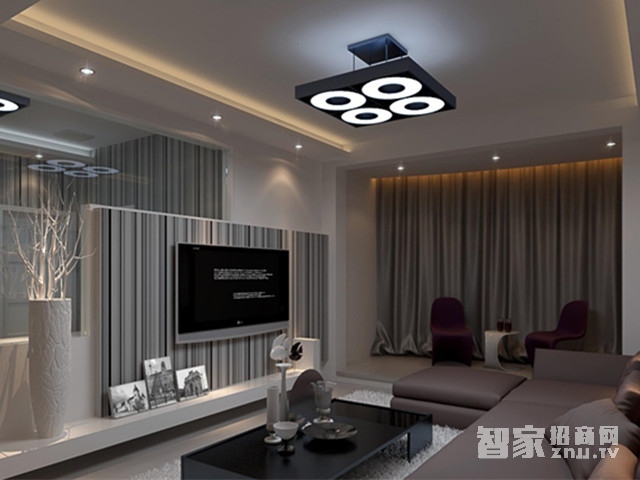Smart home technology is completely changing the traditional concept of living at home, offering a brand-new lifestyle to people around the world. As technology continues to evolve, how do you see the future of the smart home market? Here are some real insights from users that might help you understand the current trends and challenges in this rapidly growing field.

User 1: The question is, does smart home have a future? Well, it’s all about trends. High-end communities were the first to adopt smart home solutions, and as these become more affordable, they will gradually spread to the mainstream. These areas can handle higher costs—both for products and services.
Take Bill Gates’ smart home as an example. He was one of the early pioneers, and his setup was a massive investment back then. In many Western countries, smart homes are already quite popular among villa owners.
Looking ahead, I believe more families will eventually use smart home devices. But why isn’t it popular yet?
- Wireless smart home technology is still not fully mature.
- It hasn’t solved the core pain points for most households.
- Both the price and the learning curve are high. Many smart home devices require professional installation and configuration before they can be used.
- The service ecosystem is still underdeveloped.
These are the main barriers to widespread adoption. However, the potential for growth in the smart home market is huge.
User 2: Industry insiders say that traditional smart home equipment may soon be outcompeted by companies like Xiaomi and Alibaba. The smart home industry has been around for years, but traditional systems required complex wiring and central control units, which made them expensive and hard to install.
Many homeowners, especially those with smaller spaces, didn’t see the value. Even for villa owners, the reliability was questionable, and many had issues with faulty installations and poor after-sales support. Now, customers are more likely to choose simpler, more affordable options like Xiaomi or Ali products.
Traditional smart home systems don’t seem to have much future, but the new generation of smart devices—like smart plugs, gateways, and air purifiers—have great potential. They’re easier to use, don’t require major renovations, and are much cheaper. It all depends on whether manufacturers can create products that truly meet user needs.
User 3: Smart homes today rely heavily on mobile apps, but this often leads to slow response times, which hinders development. However, I think the real breakthrough could come in 2022. Imagine using a smart wristband or phone case that acts as a remote control—like a mouse for your home. This could make controlling lights, doors, and taps much more intuitive.
Such wearable or accessory-based solutions could simplify smart home interaction and make it more accessible. If people find these tools easy and convenient, it could accelerate the adoption of smart home technologies.

User 4: Smart homes and the Internet of Things (IoT) are definitely a big trend. If you're considering entering this industry, there are different paths. Some manufacturers focus on individual smart products, while others offer full-scale integrated solutions.
Single product development has a lower technical barrier, but creating a complete smart home system requires a robust platform and multiple compatible devices. For startups, it might be better to start with a single product, aiming for precision and effectiveness. If you want to be an agent or partner, look for brands that offer comprehensive solutions and can provide added value through design, installation, and maintenance services.
User 5: When it comes to smart homes, most people aren't strangers to the idea, even if it's still somewhat abstract. It used to be something only the wealthy could afford. Now, with products like Xiaomi’s smart socket, gateway, and air purifier, more people are getting a taste of what smart living can offer.
You can set up different scenarios—like lighting, curtains, heating, and air conditioning—and control everything from a smart panel or via a mobile app. However, Xiaomi’s products are sometimes seen as cluttered, and the user experience isn’t always smooth. Plus, the mess of wires and outlets can be unsightly and hard to clean.
A smart home should be controlled by a central “brain†rather than a collection of disconnected devices. To bring smart homes into everyday life, security should be the first step. Safety is everyone’s concern, and without it, everything else is just talk.
Smart door locks, for example, offer features like remote unlocking, fingerprint access, and anti-theft alerts. A good smart lock doesn’t need to cost thousands—something around 2,000 yuan is sufficient for most families. Adding sensors for windows, smoke, and gas leaks can further enhance safety.
Once security is solid, other smart devices can follow naturally, creating a chain reaction that makes the entire home smarter and more efficient.
User 6: With the rise of IoT, the future of smart homes is bright. The smart manufacturing industry is set to shine in the coming years.
User 7: There’s definitely a lot of potential. The key factors now are technological advancement, product experience, and the ability to identify real-world applications.
Related Suggestions:
Article: 2018 Smart Home Industry Development Status and Prospects
Recommended: Robots Join Affiliate Robot Laser Projection
Ethernet Network Connectors,Ethernet Cable Adapter,Ethernet Cable Connector,Internet Cable Connector
Dongguan Zhuoyuexin Automotive Electronics Co.,Ltd , https://www.zyx-fakra.com